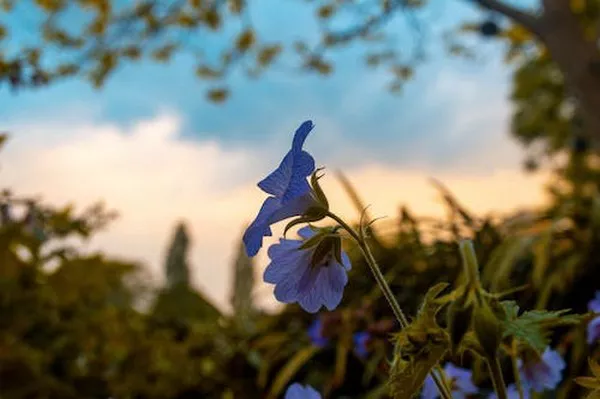In the realm of floral wonders, the bluebell flower stands as a symbol of enchantment and natural beauty. With its delicate bell-shaped blossoms and vibrant hues, this captivating flower has captured the hearts of nature enthusiasts and botanists alike. In this comprehensive exploration, we delve into the depths of what makes the bluebell flower a botanical masterpiece, from its taxonomy and habitat to its cultural significance and ecological roles.
Unveiling the Bluebell: Taxonomy and Botanical Characteristics
The bluebell, scientifically known as Hyacinthoides non-scripta, belongs to the family Asparagaceae. This perennial bulbous plant is native to Western Europe, where it graces woodlands, meadows, and gardens with its splendid display of flowers. The distinctive bell-shaped blooms, which come in various shades of blue and violet, are a defining feature of the bluebell, making it easily recognizable in its natural habitat.
The slender stems of the bluebell reach heights of 30 to 50 centimeters, bearing a cluster of drooping, tubular flowers. Each flower has six petal-like tepals and narrow, linear leaves that add to the overall grace of the plant. The bluebell’s botanical characteristics contribute not only to its aesthetic appeal but also to its adaptability to different environments.
Habitat and Growing Conditions
Bluebells have a particular affinity for woodlands and meadows, where they create breathtaking carpets of color during the spring season. These flowers thrive in well-drained soils with dappled sunlight, often appearing in large numbers under deciduous trees. The bulbs of the bluebell are adept at naturalizing, creating expansive colonies that transform the landscape into a sea of blue.
Understanding the specific habitat requirements of bluebells is crucial for those seeking to cultivate and appreciate these blooms. While they can be cultivated in gardens, mimicking their native woodland environment is essential for ensuring optimal growth and prolific flowering.
Cultural Significance and Symbolism
Beyond its botanical allure, the bluebell holds a special place in cultural traditions and symbolism. In folklore, bluebells are often associated with fairies, believed to ring magically to summon these mythical beings. This association has contributed to the flower’s reputation as a symbol of gratitude and everlasting love.
In Victorian flower language, bluebells convey sentiments of humility and constancy, adding a layer of meaning to their presence in bouquets and floral arrangements. The timeless beauty of the bluebell has also inspired poets and artists, becoming a muse for creative expressions that celebrate the ephemeral and delicate nature of life.
Conservation Challenges and Initiatives
Despite their enchanting beauty, bluebells face conservation challenges in the modern era. The loss of natural habitats due to urbanization and changes in land use poses a threat to the native bluebell populations. Additionally, the introduction of non-native bluebell species, such as the Spanish bluebell (Hyacinthoides hispanica), has led to hybridization and potential genetic dilution of the native species.
Conservation initiatives play a crucial role in preserving the delicate balance of bluebell ecosystems. Efforts to protect woodlands, promote sustainable land management practices, and raise awareness about the importance of preserving native flora contribute to the overall well-being of bluebell populations.
Ecological Roles: Beyond Aesthetic Appeal
While the bluebell’s aesthetic appeal is undeniable, its ecological roles are equally significant. Bluebells contribute to the intricate web of woodland ecosystems by providing food for pollinators such as bees and butterflies. The nectar-rich flowers attract these essential pollinators, facilitating the reproduction of various plant species in their habitat.
Moreover, the bluebell’s ability to form extensive colonies helps prevent soil erosion and contributes to nutrient cycling in woodland ecosystems. The leaves of bluebells play a crucial role in capturing sunlight during the early spring before deciduous trees fully leaf out, maximizing the use of available sunlight in the forest understory.
Cultivating Bluebells: Tips for Gardeners
For gardening enthusiasts seeking to cultivate bluebells in their own green spaces, understanding the specific requirements of these delicate blooms is paramount. Planting bluebell bulbs in well-drained, humus-rich soil and providing the right amount of sunlight are key factors for successful cultivation. Whether in formal garden beds or naturalized areas, bluebells can bring a touch of wild elegance to any landscape.
Conclusion
In conclusion, the bluebell flower stands as a testament to the intricate beauty and ecological importance of the natural world. From its taxonomy and habitat to its cultural significance and conservation challenges, the bluebell reveals itself as more than just a captivating bloom. It is a symbol of resilience, interconnectedness, and the timeless elegance that nature graciously bestows upon us each spring. As we continue to appreciate and understand the wonders of the bluebell, may we also be inspired to nurture and preserve the delicate ecosystems that make these enchanting flowers flourish.


